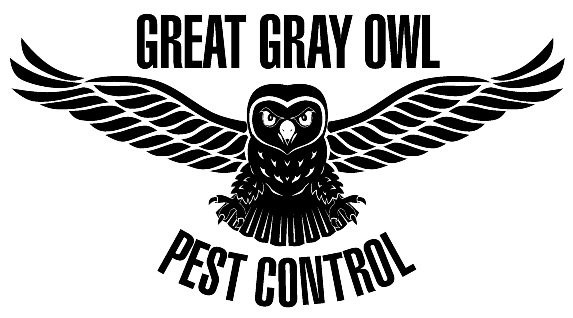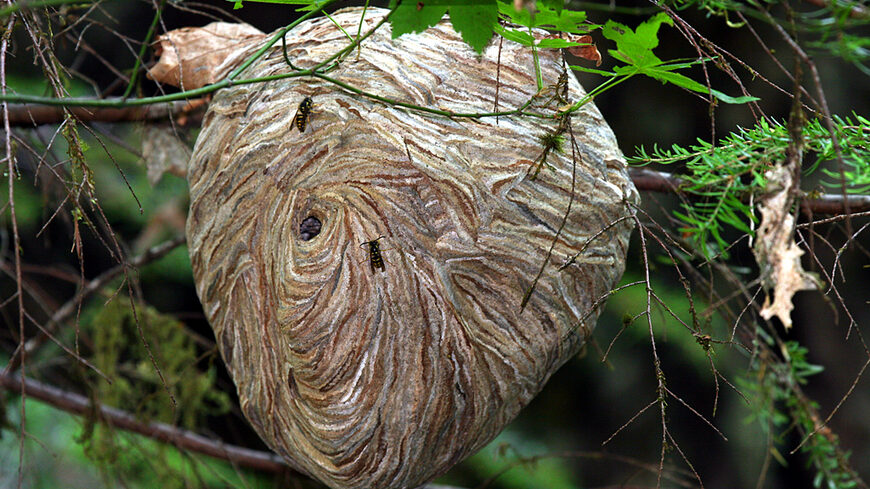Some of the most dangerous species of stinging Hymenoptera are the "paper making wasps" of the Family Vespidae. A useful characteristic that aids identification of members of this family is that many of them fold their wings lengthwise when at rest, making the wings seem only half as wide as they actually are. These wasps are social insects that build nests of a paper-like material which is composed of a mixture of masticated wood and the salivary secretions of the female wasps. The nest is begun by a mated female (queen) that builds a small number of cells and places an egg in each cell.
After hatching, the larvae develop within the cell and are completely dependent upon the queen for food. The queen forages outside the nest and brings food back to the larvae, caring for them in this way until pupation occurs. The food for the larvae is meat, usually from caterpillars or other insects that may be found. The adults feed on liquids such as nectar, honeydew and juices from the bodies of insects fed to the larvae. The wasps emerge from the pupal skin as the typical worker of the Hymenopteran caste system. They are adult females insofar as the structural features of the body are concerned, but the internal reproductive organs do not develop to a functional state. The queen now devotes her full time to egg-laying, and the further construction of the nest and the feeding of the larvae are carried out by the workers.
The entire colony does not survive the winter in the temperate zone. Toward the end of the summer, a drastic change takes place in the pattern of egg-laying in the colony. For some reason not yet completely understood, some of the workers will become reproductively mature and will lay eggs. The male wasps develop from these eggs. When the mature males and females emerge, they leave the nest and mate. Matings may occur between individuals from the same nest or between males and females from different nests. After the newly developed adults depart, there is a marked degeneration of the activities within the nest. The mated female enters some protected place and hibernates, beginning a new cycle in the spring.


